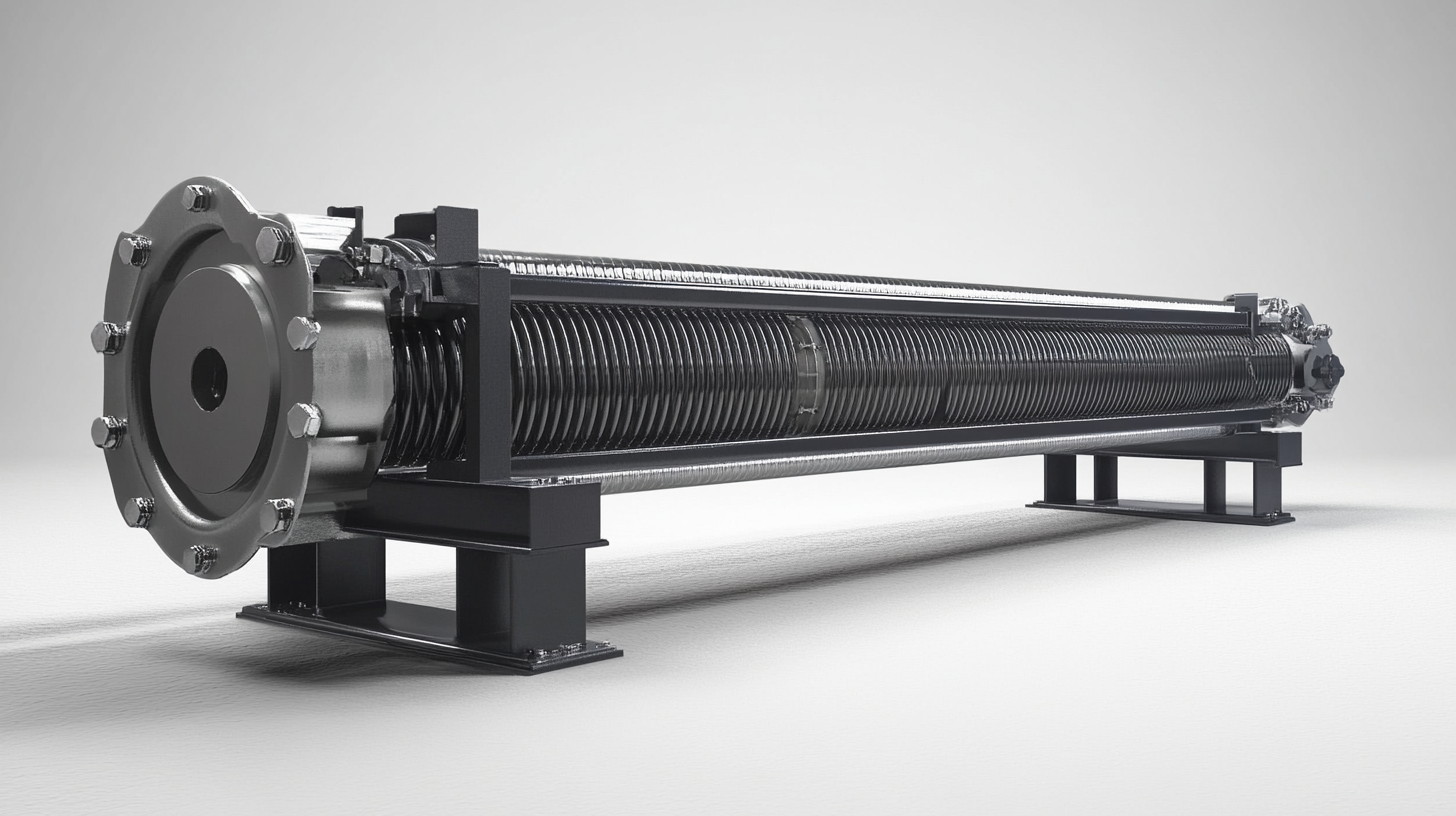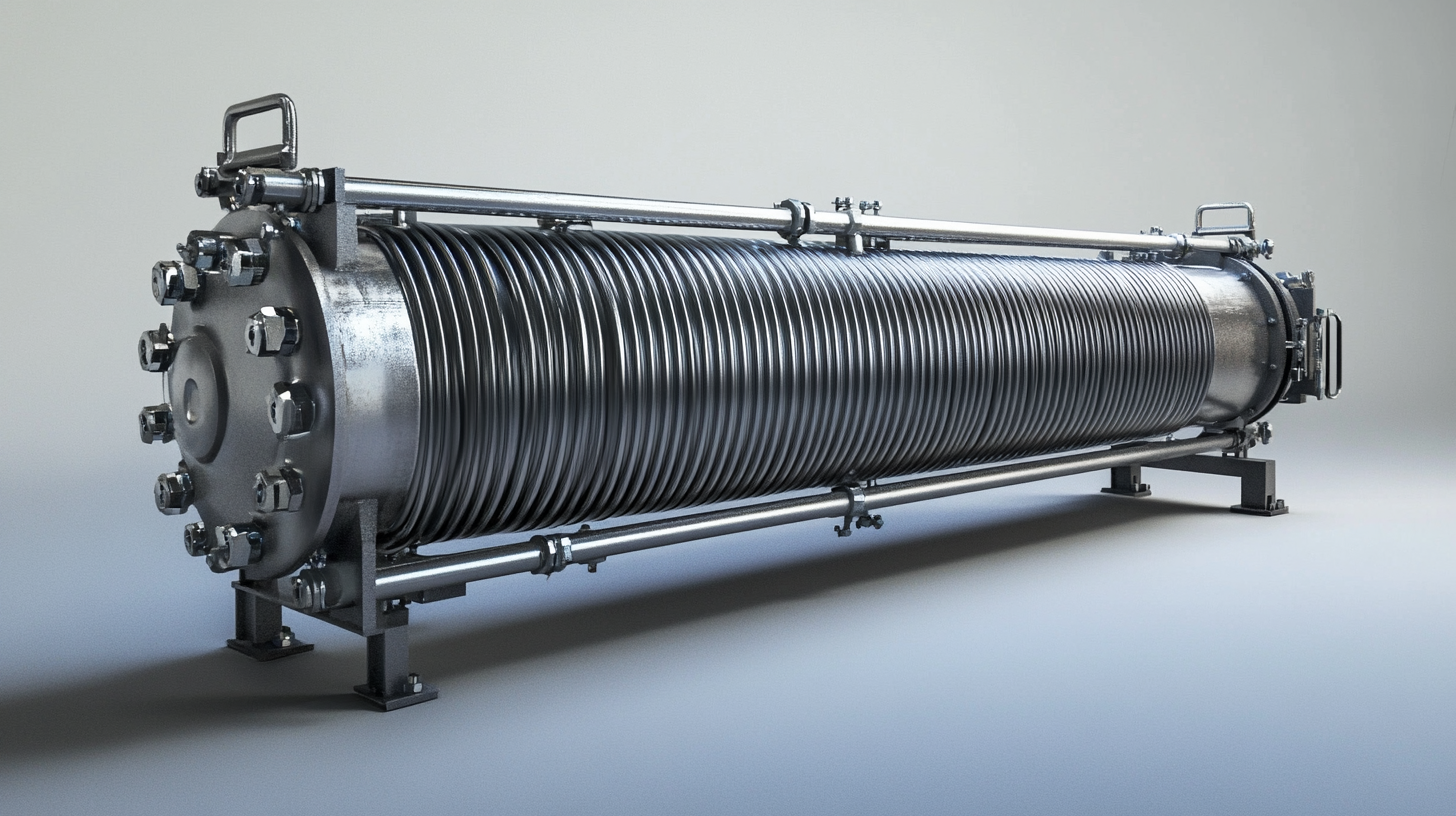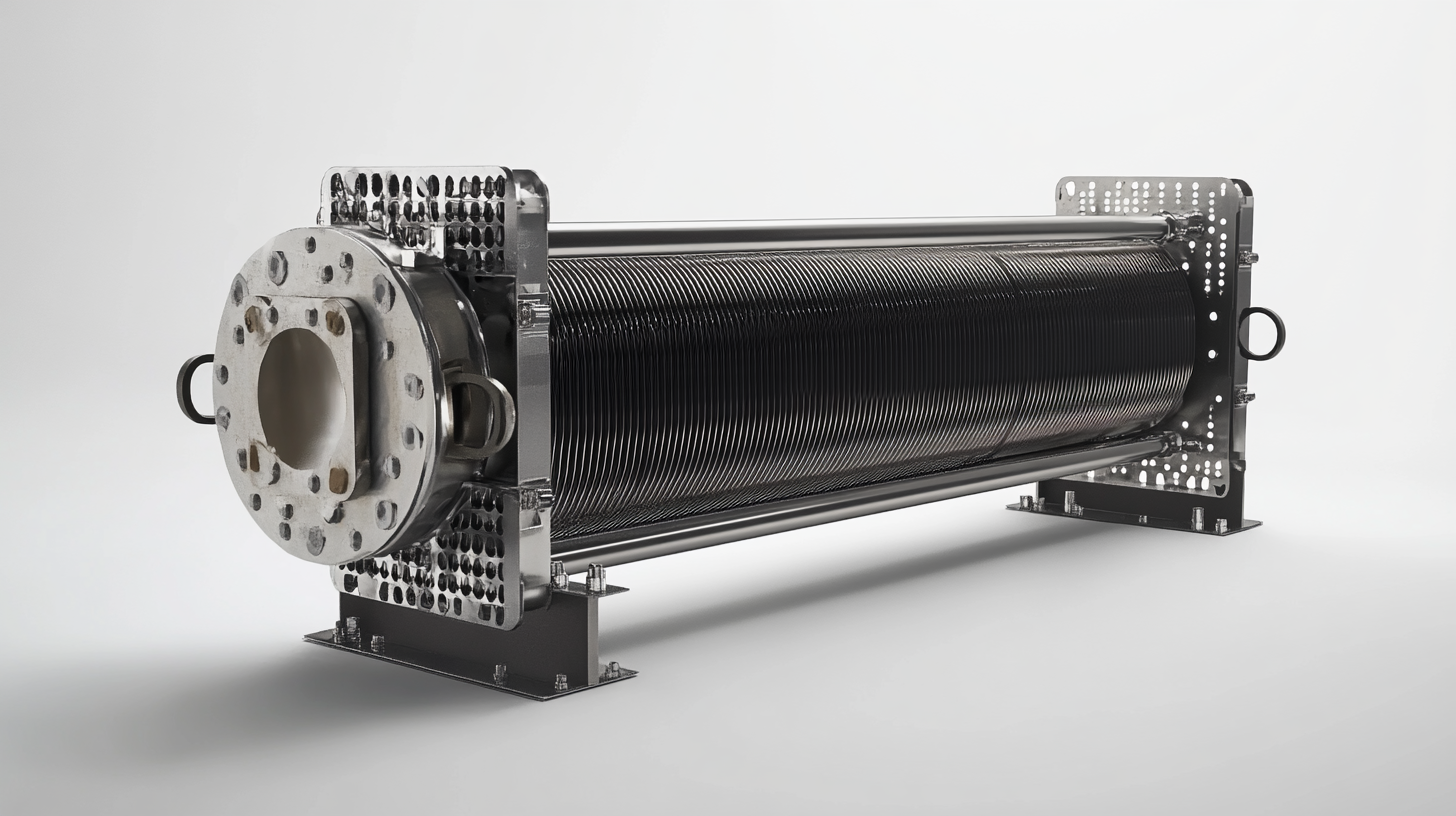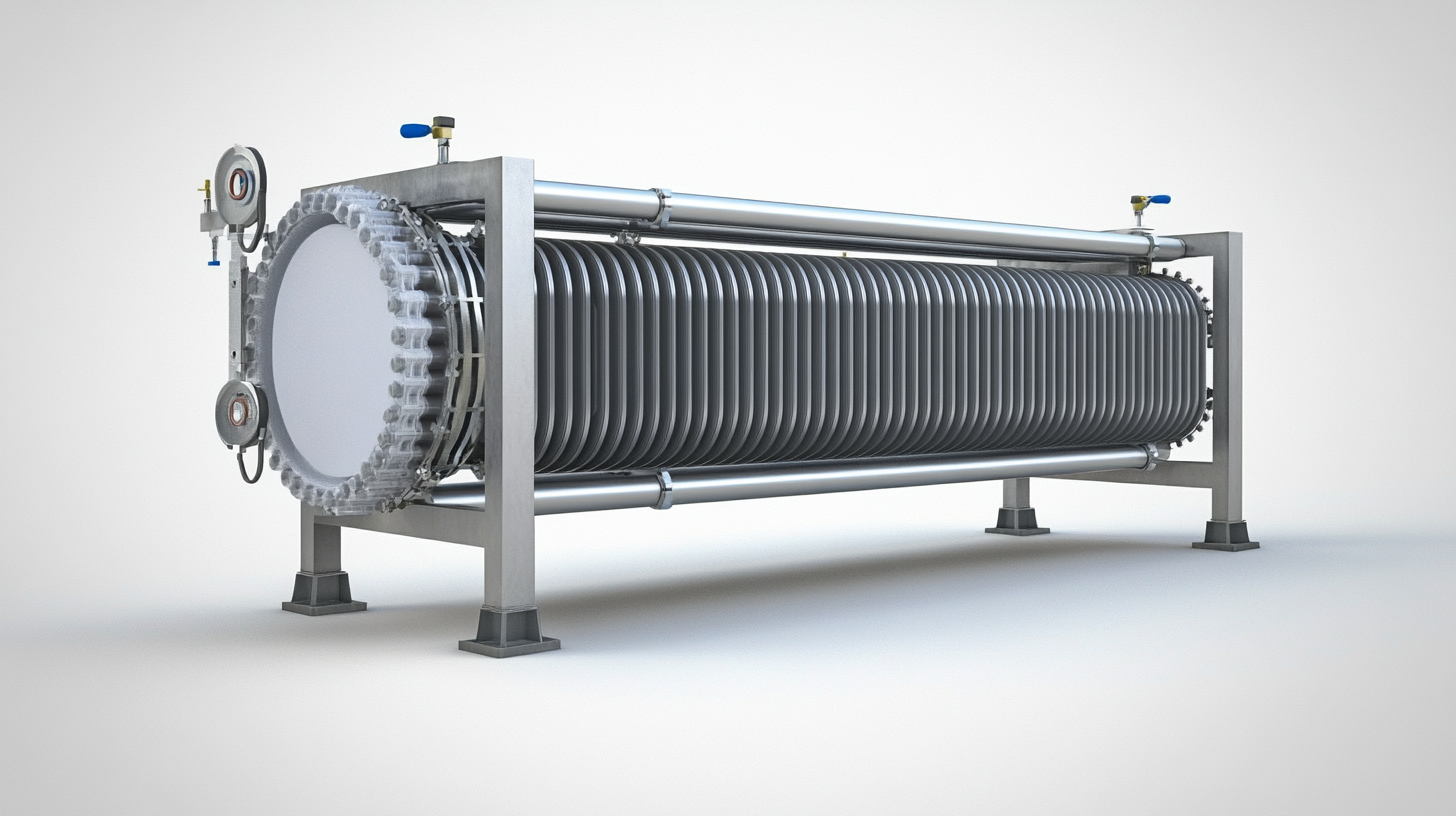Empowering Engineering Excellence: Innovate, Elevate, Deliver.
In today's rapidly evolving industrial landscape, Tube Heat Exchangers have emerged as critical components in various applications, from power generation to chemical processing. These sophisticated devices play a vital role in maximizing efficiency and minimizing energy consumption by facilitating the transfer of heat between liquids or gases. As global buyers increasingly recognize the importance of selecting the right heat exchanger solutions, gaining comprehensive insights into this technology is essential for informed decision-making.
This blog aims to illuminate key aspects of Tube Heat Exchangers, providing an in-depth exploration of their design, functionality, and unique advantages. By examining various types, applications, and factors influencing their performance, we hope to equip international buyers with the knowledge necessary to navigate the complexities of the market. Whether you are involved in procurement, engineering, or operational management, understanding the intricacies of Tube Heat Exchangers will empower you to make smarter investments in heat transfer solutions that meet the demands of your specific industry.

Tube heat exchangers play a pivotal role in industrial applications due to their efficiency and versatility. One of the key benefits is their ability to handle a wide range of temperatures and pressures, making them suitable for various sectors, including oil and gas, chemical processing, and power generation. According to a recent report by MarketsandMarkets, the global tube heat exchanger market is projected to reach $7.6 billion by 2025, growing at a CAGR of 5.4% between 2020 and 2025. This growth is indicative of the increasing demand for energy-efficient solutions across industries. Another significant advantage of tube heat exchangers is their compact design, which allows for better space utilization. This is particularly beneficial in settings where floor space is limited. Additionally, tube heat exchangers are known for their ease of maintenance. The design allows for individual tube replacement, which can reduce downtime and operational costs. A study from ResearchAndMarkets indicates that reduced maintenance costs can lead to savings of up to 30% over the life cycle of the equipment. Furthermore, tube heat exchangers are highly effective at transferring heat between fluids, which is crucial for optimizing energy use. They can achieve thermal efficiency ratings of over 90%, which aligns with the push for sustainability and reduced energy consumption in manufacturing processes. The enhancements in materials and technologies used in tube heat exchangers also contribute to their reliability and longevity, making them a solid investment for companies looking to enhance their operational efficiency.

In the realm of thermal management, tube heat exchangers continue to play a pivotal role, especially with advancements in materials and design for enhanced performance. Recent experimental studies have highlighted the effectiveness of different configurations, including a comparative analysis of shell-and-tube heat exchangers against double pipe designs utilizing CNT/water nanofluids. Research indicates that shell-and-tube heat exchangers can achieve superior heat transfer rates, showcasing a notable efficiency improvement of up to 30% over conventional double-pipe setups under similar operational conditions.
Further investigations into innovative designs, such as the integration of 3D-printed components in heat exchangers, demonstrate significant potential for optimizing thermal performance. For instance, a recent study on a compact heat exchanger showed promising results during condensation tests with HFE7100 refrigerant, where enhanced surface area provided by the 3D-printed structures led to improved heat exchange efficiency. This adaptability in design not only reduces fabrication costs but also allows for customization matching specific application requirements.
Moreover, the exploration of varied heat exchange materials has been crucial in maximizing operational capacity. A detailed thermodynamic performance analysis across various ground heat exchanger systems—linear-loop, spiral-coil, and slinky-coil—reveals distinct advantages in specific scenarios. The numerical simulations indicated that spiral-coil arrangements provide better thermal performance under low flow conditions, which is essential in applications such as geothermal heating systems. This comparative analysis underscores the need for global buyers to carefully consider the design and material properties of tube heat exchangers to achieve desired performance outcomes tailored to their operational needs.

In recent years, the global tube heat exchanger market has witnessed significant growth, driven by the increasing demand for energy-efficient systems across various industries. These heat exchangers are essential in applications ranging from power generation to chemical processing, helping to optimize thermal performance while minimizing energy consumption. As industries continue to prioritize sustainability, the adoption of tube heat exchangers that provide superior heat transfer capabilities is on the rise, leading to new market opportunities and innovations.
Market trends indicate that emerging economies are contributing substantially to the growth of tube heat exchangers. As industrialization progresses, countries are investing in modern infrastructure and energy-efficient technologies, propelling the demand for advanced thermal management solutions. Additionally, the shift towards renewable energy sources presents a unique opportunity for tube heat exchanger manufacturers to develop specialized products that enhance efficiency in solar thermal plants and biomass facilities.
Furthermore, advancements in materials and design are expected to influence the growth projections for tube heat exchangers significantly. Innovations such as corrosion-resistant coatings and compact designs not only extend the lifespan of these devices but also improve their performance in challenging environments. As global buyers seek reliable and high-performance heat exchangers, the focus on R&D and collaboration among manufacturers will play a crucial role in shaping the future landscape of the market.

When evaluating tube heat exchangers, it’s essential to focus on several critical performance metrics that can significantly impact their efficiency and effectiveness. One of the primary metrics is the heat transfer coefficient, which determines how well the heat exchanger can transfer thermal energy between the two fluids. Analyzing this coefficient helps buyers understand the exchanger's performance under specific operating conditions, allowing them to select models that will meet their unique needs.
Another crucial metric is the pressure drop experienced by the fluids as they pass through the heat exchanger. A higher pressure drop may indicate greater resistance to flow, which can influence the operational efficiency and energy costs associated with the system. Therefore, assessing the pressure drop helps in evaluating the overall performance and can guide buyers in choosing designs that optimize flow characteristics for their applications.
Additionally, durability and maintenance requirements are vital aspects of tube heat exchangers. The materials used in construction, along with design features such as tube arrangement and cleaning access, play a significant role in determining the longevity and ease of maintenance. Buyers should prioritize heat exchangers that not only perform well but are also built to withstand the specific conditions of their application, minimizing downtime and maintenance costs in the long run. Understanding these performance metrics will empower global buyers to make informed decisions when selecting tube heat exchangers tailored to their operational needs.
Regular maintenance and optimization of tube heat exchangers are crucial for maximizing their efficiency and longevity. One of the best practices includes conducting routine inspections and cleaning to prevent fouling, which can severely impact the heat transfer efficiency. Utilizing the appropriate cleaning methods, such as chemical cleaning or mechanical scraping, can help in addressing build-up without damaging the tubes. Additionally, monitoring the pressure drops and flow rates in the system can provide valuable insights into the operational health of the heat exchangers.
Another essential aspect of tube heat exchanger maintenance is the use of advanced monitoring technologies. Implementing real-time performance monitoring can help identify issues before they escalate. Sensors can track temperature gradients, flow rates, and overall system performance, allowing for proactive adjustments to maintain optimal operation. Furthermore, maintaining proper operating conditions, such as pressure and temperature, prevents unnecessary strain on the equipment, thereby extending its service life.
Operator training is also vital for optimal maintenance practices. Ensuring that personnel are well-versed in the operation and care of tube heat exchangers can lead to improved identification of potential problems and prompt corrective actions. Providing continued education on the latest techniques and technologies can equip teams to implement innovative solutions that enhance efficiency and reliability. By focusing on these best practices, businesses can ensure their tube heat exchangers perform at their best, thereby increasing overall productivity and reducing operational costs.